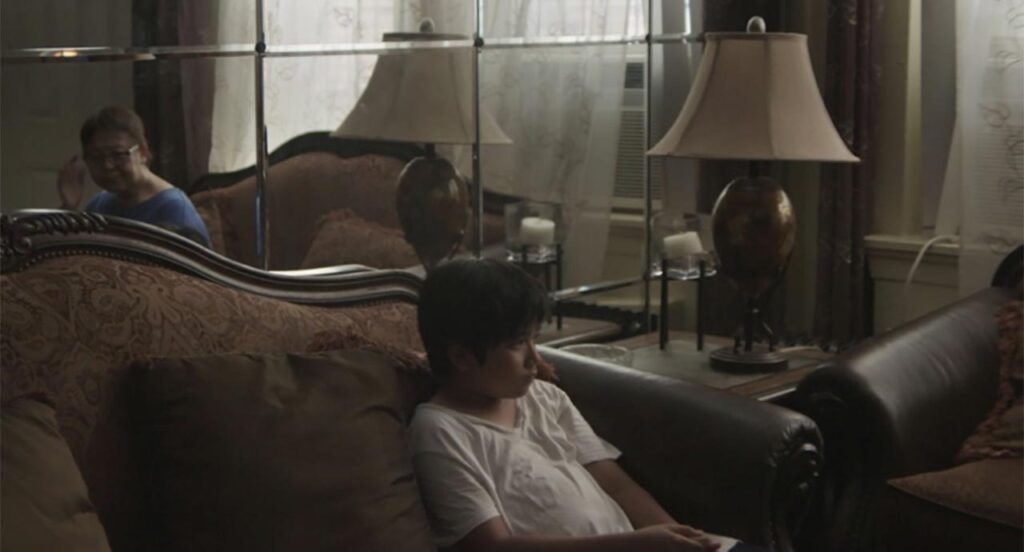The Sound of Silence
George Lucas believes that ”sound is 50 percent of the movie-going experience” – yet how much of that sound does a cinema goer typically expect to be cerebral, plot driving dialogue in familiar Hollywood style? Two films in the Southeast Asian Short Film Competition Programmes, The Sound of Coins Hitting Brass (2017) and Jodilerks Dela Cruz, Employee of the Month (2017) challenge our preconceived notions of sound by isolating dialogue as almost superfluous and secondary, allowing diegetic sounds to fill the space and shape the nature of the film’s central characters.
Both protagonists are unwilfully stuck in the limbo of their specific poverty, and whilst they are clearly immersed in the struggles to barely survive, they seem alienated from any form of hope in a sense that ‘All that there is to be said has already been said’. Both are solitary figures with no form of companionship, and have no outlets to express their frustration aside from slight but unfulfilled childish outburst as momentary reprieve.
In The Sound of Coins Hitting Brass, the young boy, Manny, watches silently as his father attempts to provide for them through gambling. The title itself refers to the literal sound as Manny’s Father, Andreas, exchanges notes for coins, the auditory effect reminiscent of casino slot machines and symbolic of the hopes both Manny and his father have on placing whatever money and means they have on gambling, something they cannot express to one another in words. Andreas and Manny never communicate properly, Andrea’s orders dominating most of the film’s dialogue almost like a typical patriarchal Voice of God commentary and hence excluding any possibility for Manny to interject or speak.
The film is also interestingly shot in very tight 1:1 square frame which consists largely of facial close-ups, and hence the almost hyper-realistic ambient noise, in either the clattering of dinner cutlery or the humming of the Laundromat room tone, affectively evoke a sense of space that the frame is not capturing. Yet, in this specificity, the auditory landscape reminiscent of Darren Aronofsky films also conversely creates a sense of claustrophobic emptiness that separates these frames from being a harmonious description of the scene; the visual denoting lack of understanding between characters whereas the sound highlights the longing that weighs in each moment.

Similarly, in Jodilerks Dela Cruz, Employee of the Month, the constant buzz of vehicles passing by the dilapidated petrol kiosk Jodilerks works at signifies a society constantly averting their gaze from poverty although it is in plain sight, only to intervene when there is something to exploit for their personal gain. Both the trickling sound of filling bottles with gas and Jodilerks urinating in the middle of the petrol kiosk emanate a tone of ennui, a complicit desperate in the passing of time. The absurdist lashing out in American metal music, the unnerving scratching as Jodilerks keys a car, or even the films closing moment all serve as almost expressionist forms of Jodilerks inner psyche, in enabling her to make decisions which she is usually too disempowered from committing.

Both films present characters embodying a Gestus of helplessness; a riveting and symbolic physical representation of physical submission to bleak social circumstances. Whilst they remain largely unprotestingly passive. their almost apathetic and lifeless stances also provide a meta-cinematic point of introspection for our roles as spectators of this poverty – although we can understand the injustice that affects these characters, nothing we can say has power to change the situation, rather, it demands action, though there is no didactic imposition on what this action should be.
Yet, there is no sense of self-gratuitous catharsis for the characters or the viewers in either film’s denouements, as each leading character enacts the most they can do to catalyse the inevitable. Albeit their best efforts, the actualization of their remaining courage, they still remain victims, or, even worse, collateral damage.
You wont find any quotable (IMDb-esque) quotes to regurgitate on your Insta-story in a Rupi Kaur fashion, but these two films certainly imprint distinct aural images that liberate our perspective on what explicit and effective communication looks and sounds like (from the director, unfortunately not between characters).
Lee and Manatad usher and perpetuate a new form of Southeast Asian cinema that is not restricted by (issues of interpreting) language, allowing for greater transnational production and audiences. They recognize how unifying cinema can be in times where words simply fall flat as empty promises or are easily convoluted, and underscores the need to reevaluate how we engage familiar forms of communication to not just make logical sense but evoke empathy.
Catch The Sound of Coins Hitting Brass as part of the SEA Short Film Competition: Programme 3 and Jodilerks Dela Cruz, Employee of the Month as part of the SEA Short Film Competition: Programme 1.


